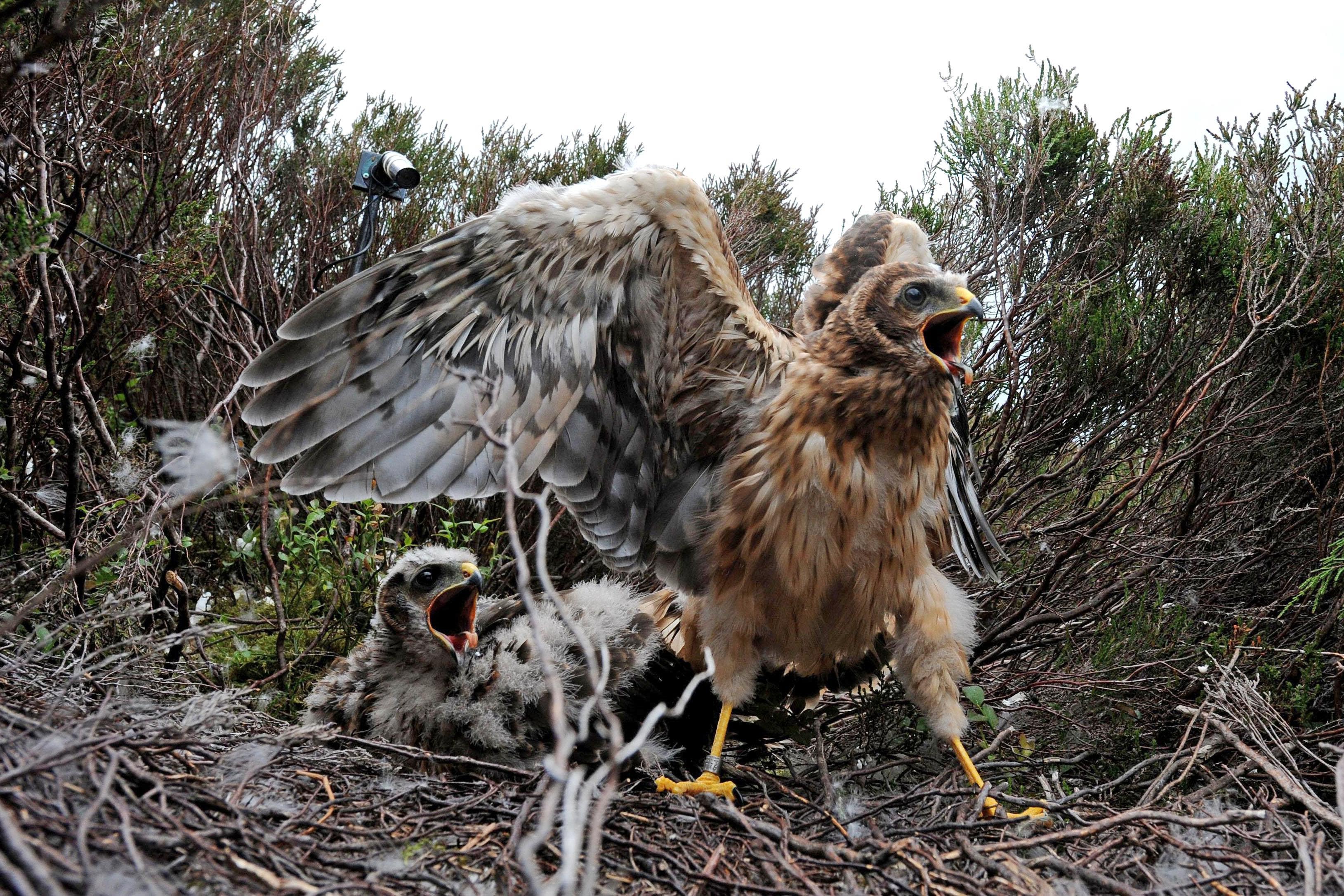Hen harrier chick numbers grow for seventh year in a row
It is a new record year for the growing population despite continued persecution on grouse moors.

Your support helps us to tell the story
From reproductive rights to climate change to Big Tech, The Independent is on the ground when the story is developing. Whether it's investigating the financials of Elon Musk's pro-Trump PAC or producing our latest documentary, 'The A Word', which shines a light on the American women fighting for reproductive rights, we know how important it is to parse out the facts from the messaging.
At such a critical moment in US history, we need reporters on the ground. Your donation allows us to keep sending journalists to speak to both sides of the story.
The Independent is trusted by Americans across the entire political spectrum. And unlike many other quality news outlets, we choose not to lock Americans out of our reporting and analysis with paywalls. We believe quality journalism should be available to everyone, paid for by those who can afford it.
Your support makes all the difference.The hen harrier population continues to grow, with 141 chicks having fledged in England so far this year and 54 nests recorded, according to Natural England.
It is the seventh year in a row that numbers have increased, having been driven almost to extinction after grouse shooting became popular in the mid-19th century.
They were once common across the upland regions of the UK but many gamekeepers hunted them and destroyed their nests as the hen harriers prey on small birds, including grouse.
Despite efforts to bring back hen harriers by the Government and conservationists, the birds are still shot illegally in areas where there are grouse moors.
The encouraging numbers we see again this year are testament to the volunteers, landowners and partner organisations who have worked so hard to support and monitor these birds
Some birds have been found with their legs and heads pulled off so the killers can remove the tracking collars.
This year’s increase in chicks successfully fledging means 2023 is another record year for their return, following 119 chicks recorded last year in County Durham, Cumbria, Lancashire, Northumberland and Yorkshire.
Natural England chair Tony Juniper said: “The continuing year-on-year increase in the number of hen harriers fledging from English nests is fantastic to see, and shows how through partnership work it is possible to reverse nature’s decline, even in the most challenging of circumstances.
“The encouraging numbers we see again this year are testament to the volunteers, landowners and partner organisations who have worked so hard to support and monitor these birds.
“Today’s news is, however, overshadowed by continuing illegal persecution, which despite all the good practice among many landowners still stubbornly persists.
“We know that much more needs to be done to protect these precious birds and remain absolutely committed to working with our partners to stamp out the despicable killing of these wonderful creatures that bring so much joy to so many people.”
We know that there is still a very real risk of these young birds being illegally killed once they leave the nest
Of the fledglings recorded this year, 24 were taken from nests on grouse moors and raised in captivity as part of an experiment to see if releasing them later in life reduces conflict with gamekeepers and helps the population grow, as many are killed shortly after leaving the nest.
An RSPB spokesperson said: “The news that hen harriers have raised 141 chicks in England this year is encouraging.
“However, we know that there is still a very real risk of these young birds being illegally killed once they leave the nest.
“In April this year, 21 harriers were reported missing, either proven killed or disappeared, over the previous 12 months.
“And in August, three more vanished in a short space of time, all on driven grouse moors. That is why we need decision-makers to ensure that existing wildlife protection laws are better enforced and resourced.”